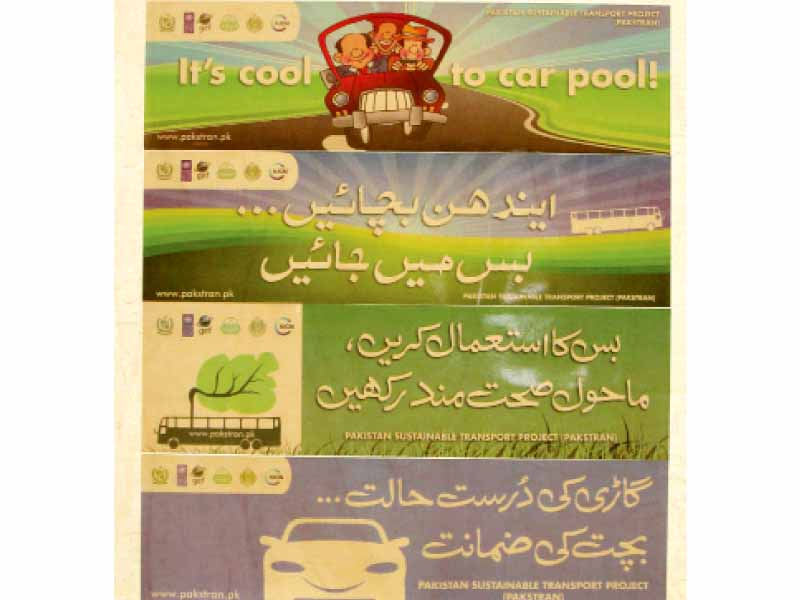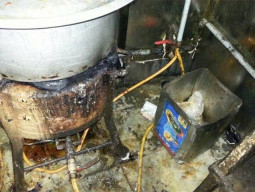
Karachi, which houses 11 per cent of the country’s population, has grown exponentially since Independence. And now, to counter the effects of such urbanisation, speakers at the South Asian Cities Conference emphasised its need to go green.
Tahreem Omar was the first to speak after moderator Rafay Alam gave a brief introduction on the session for ‘Urban Environment and Sustainability’. The city’s population has grown 35 times since 1947 and its area by an astounding 16 times, she revealed. This urbanisation has increased the city’s overall temperature by an average of four degrees.

Karachi University’s Sheeba Afsar and Syed Jamil Hasan Kazmi gave a searing indictment of the city’s quality of life. At 51 per cent, more than half of the city’s population lives in informal settlements, they revealed. These areas cover a whopping 37 per cent of the city. Ironically, the area with the worst living standard is Gadap Town — the area that houses Karachi’s original inhabitants, the ones who have called the city their home for more than 300 years. “In the 1970s, Karachi produced rice, peaches and plums,” said a clearly passionate Kazmi. “Today, people don’t even have trees in their own houses.”
However, as with any good build-up, it wasn’t until the next few speakers took centre stage that the numbers really started going from eye-raising to outright worrying. Institute of Business Administration’s Sidrat Asim said Karachi should have 25 per cent ‘green cover’. It has just over five per cent instead.
Asim then gave some statistics on the Karachi forestation project which had a budget of Rs8.3 billion, out of which only Rs6 million have been spent. The only tree planted was the Concarpus that is known to lead to pollen allergies and asthma attacks and prevents the growth of any other tree while destroying the area’s ecological habitat. Planting this tree has caused many of Karachi’s birds to migrate.
“Yesterday, at the roundtable meeting, Neem ke darakht ke neechay bethay mujhay chiryon ki awazain arahi thien [I could hear the birds chirp as I sat under the Neem tree],” she said, switching to Urdu halfway through the sentence as words failed to convey her emotions. “You don’t experience that any more.”
She then went on to reveal one of the city’s best kept secrets - a forest that once covered 1,000 acres near Lyari. “In order to make way for ‘planned urbanisation’, the forest has now been cut down to 400 acres during the previous government.”
Moderator Rafay Alam weighed in. “I cannot think of anything more criminal than cutting trees,” he said. “Ask a young child in Karachi today where pistachios come from and (s)he would most likely answer ‘the store.’ A lack of trees is making the city less human.”
The final speaker, Mishaal Rozina Merchant, was in no mood to put the clearly worried audience to ease. Starting off with a more global picture, she said that the world produced food enough to feed 11 billion people in 2007. However, nearly one billion people go hungry. “Forty-eight per cent of the country is food insecure,” she added as a map of Pakistan flashed across the screen.
Karachi produces five per cent of its food. “In its current structure, the city needs to be more than 20 times its present size to be self-sufficient.” Malir and Gadap towns are the only two areas that produce food in the city while Landhi has one of the world’s largest dairy farms.
She added that Karachi requires 1,242 million gallons per day (MGD) of water but only gets 650mgd. Quickly providing a solution, she spoke of the 300mgd of wastewater that makes its way to the Arabian Sea from Karachi. “This can be used to ease the load if properly processed.”
Published in The Express Tribune, January 12th, 2014.


1732519298-0/BeFunky-collage-(85)1732519298-0-165x106.webp)
1732611352-0/lamar-(5)1732611352-0-165x106.webp)
1732610018-0/BeFunky-collage-(91)1732610018-0-165x106.webp)












COMMENTS
Comments are moderated and generally will be posted if they are on-topic and not abusive.
For more information, please see our Comments FAQ